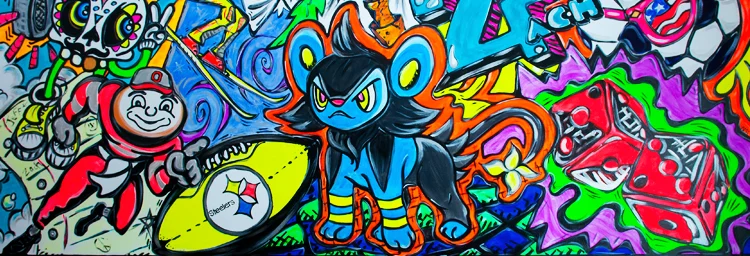Vaishnavi Srivastava
Neon colours always seem to be in fashion. In an era where people are paying closer attention to their individual artistic choices in clothing and self-expression, colours play an important role. Neon colours in specific are adopted by people who seek to give out a loud and groovy statement. It is hard not to notice these eye-catching hues, not only is it their basic purpose, they are also employed everywhere. So here we are giving you 11 interesting facts on neon colours and their origin:
1. Dates back to the 20th century!
Georges Claude, a French chemist who created neon lights in the early 20th century, is credited with creating neon colours. He invented an innovation that would alter the visual environment forever. Claude invented neon lighting at the turn of the 20th century, introducing the ethereal glow of ionised gases to the world of fine art. His creation gave artists access to the vivid neon colour pallet, sparking a revolution in brightness, and enthralling the globe with its luminous allure.
2. The 80s baby!
Since neon colours were widely employed in fashion, art, and design throughout the 1980s, they are frequently connected to that decade. Neon colours grew to be associated with the 1980s, an era of bold aesthetics and expressive vibrancy. Neon colours filled the creative world, capturing the spirit of the day in everything from pop art masterpieces to fashion runways. These vibrant hues graced clothing, album covers, and city streets, encapsulating the time’s vitality, optimism, and unabashed joy. The neon-loving 80s left an enduring glow of nostalgia in their wake by making their glowing stamp on culture.
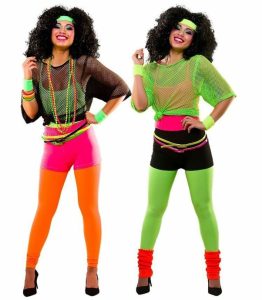
Courtesy: Quora
3. White makes it glooOwy.
Neon colours often consist of vivid, rich hues mixed with a strong white tinge to provide a fluorescent effect. This fusion produces a glow that appears to be the result of the colours themselves emitting light. When white is added, the colours become more vibrant and electric, providing a captivating effect that increases their visual impact.
4. Hey! That’s Vandalism!
In order to produce eye-catching murals and tags, neon colours are frequently employed in street art and graffiti. These vibrant colours electrify the walls, drawing onlookers’ attention and attracting them. Murals and tags are given boldness by neon paints, which also gives them distinctive liveliness. Cityscapes become dynamic galleries that beg to be seen and appreciated as a vibrant visual language evolves.
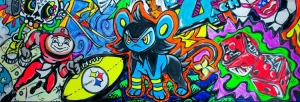
Courtesy: Rosco Spectrum
5. It’s Pop!
Pop art, a movement characterised by vivid colours and expressive graphics, typically uses neon colours. In the world of pop art, where boldness and vitality rule supreme, neon colours are at home. Neon colours provide the striking visuals and vibrant hues that this artistic movement feeds on. These vivid colours, which range from incandescent pink to throbbing yellow, give pop art masterpieces new levels of visual impact and capture the essence of a lively, dynamic culture.
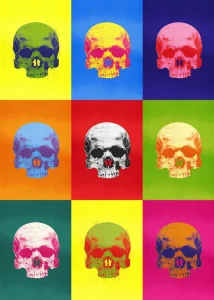
Courtesy: InkAndDrop
6. They are Retro-Futuristic.
Due to their frequent association with scientific and future themes in science fiction art and media, neon colours can communicate a futuristic or technological style. The boundaries between reality and fantasy are blurred, and neon colours serve as conduits for this futuristic world. Their brightness conjures the pulsing power of cutting-edge technology and the cosmic landscapes. These colours transport viewers into a world where the limits of possibility are stretched, leaving them in awe at the promise of what lies ahead, from neon blues mimicking the glow of futuristic cities to electric greens symbolising extraterrestrial life.
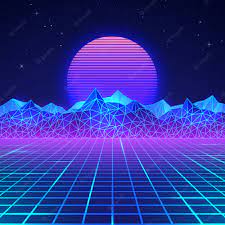
Courtesy: Freepik
7. An Artistic High.
In psychedelic art, neon colours are frequently used to provide vivid and surreal visual experiences. Neon hues of psychedelic art set off a kaleidoscopic journey into the depths of the mind. These vibrant colours are combined with wavy patterns and surrealistic imagery to create a visual hallucination. Neon pinks, purples, and greens pulse, evoking a surreal environment that flits between reality and dreams. The vivid colour scheme enhances the hallucinogenic experience and transports viewers on a mesmerising and profound visual journey.
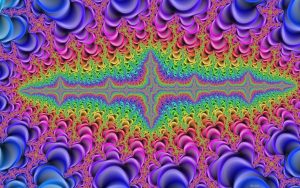
Courtesy: WallpaperUP
8. Transcends flat surfaces
Even in a two-dimensional media like paint or digital art, neon colours have the unusual ability to seem to shine and radiate light. These colours emit an illusionary glow when used in paint or digital art, giving the impression that they have a life of their own. They appear to be producing a light that pulses and dances, mesmerising the observer. This fascinating phenomenon challenges conventional wisdom, merging reality and art in a way that gives compositions a faint sparkle.
9. Not so easy to produce.
Since neon colours frequently need specialised inks or pigments to generate their brilliant look, it can be difficult to precisely reproduce neon colours in print.It takes a careful touch to convey the bright colours’ brilliant vibrancy on paper. Their brightness is difficult to work with and necessitates specialised inks or pigments. Printers navigate the complexities of replication in an effort to capture their intensity. However, the pursuit of neon’s elusive luminosity continues because of the vibrancy of these colours, which emits the same attraction.
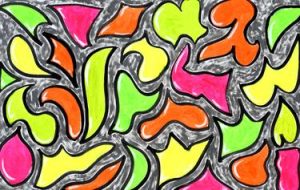
Courtesy: Saatchi Art
10. Do you know about Chromatic Vibration?
When neon colours are paired together, a phenomenon called chromatic vibration occurs that gives the impression of motion or vibration. The vibrant colours pulse and flicker, seemingly energised by an unseen force, capturing the viewer’s attention and giving the artwork a dynamic and rhythmic visual experience.
11. The Luminescence
Neon colours were developed to mimic the glow that ionised gases, like neon, emit when an electrical current flows through them. Science’s greatest achievements give rise to creative enchantment. Under the influence of electricity, ionised gases such as neon ignite with dazzling illumination. This ethereal glow inspires artists, releasing a rainbow of vivid colours. These vibrant colours are beyond the realm of reality; they pulse with vitality, arouse feelings, and enlighten the imagination with their explosive brilliance.

